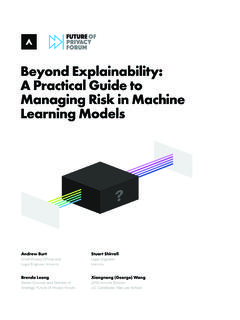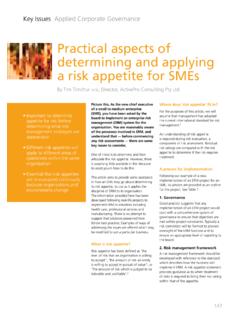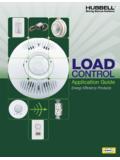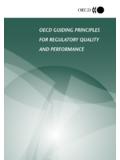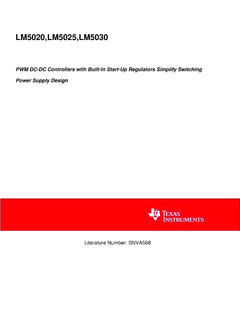Transcription of Defining and Implementing Standards for Lecture …
1 Defining and ImplementingStandards for Lecture RoomServices and FacilitiesKeith Buckman,Media Services ManagerBrunel UniversityAssociate AuthorWidad OumaarDefining and Implementing Standards for Lecture room Services and FacilitiesContents May98 Defining and Implementing Standards for Lecture room Services and Facilities3 Contents1 52 Physical and technical Standards .. playback and sound written, drawn and typed Local application of physical and technical , fixtures and Service performance 276 297 Tables:.. 311. Proportional Sizes in Relation to Distance Example Lecture Rooms at Brunel University8 Appendices: .. 33A:Brunel Media Services AV Survey 1997B:Draft Performance Standards for AV ServicesC:Service Level Agreement between BMS and Conference OfficeD:Summary List of StandardsContents May98 Defining and Implementing Standards for Lecture room Services and Facilities4 DisclaimerThe views expressed in this paper are those of the author and not necessarily of are due to my colleagues in Brunel Media Services for their ongoingcontribution to the local Lecture room project.
2 In particular, I would like to thankMarion Cherrie for her contribution to producing this Case Study. Thanks are alsoextended to staff in the University s computing and library services for assistance inobtaining source material, and to members of the Media Services User Group for theircontinuing feedback and May98 Defining and Implementing Standards for Lecture room Services and Facilities51 The aim of this Case Study is to document the process of researching and Defining standardsrelating to Lecture room services and facilities so that relevant data may be used to contributeto the process of determining national Standards within the Case Study is based on a current project being run by Brunel Media Services (BMS) todevelop the University s Lecture room AV presentation facilities by means of determining andimplementing a set of operating Standards . This activity has resulted from the merger of twoAV service operations that existed prior to the incorporation of the West London Institute ofHE within Brunel University.
3 Although these service operations became integrated within onedepartment about three years ago, local operating practices have largely been retained at thetwo service centres. Because of the relatively small size of the (new) Media Services (11 staffFTEs), it was decided at an early stage to consolidate the operation at one centre. This wasdelayed until certain influential factors had been finalised at institutional level, particularly inrelation to structure and location of University is now entering a new phase that primarily concerns the transfer of the Facultyof Arts from Twickenham to Uxbridge Campus during 1998-99 and 1999-2000. Consolidationof the Media Services at Uxbridge will occur in synchronisation because of its strong link withthe Faculty s Film & Television Studies services for Lecture rooms are currently handled in quite different ways. At Uxbridge thereis a purpose-built Lecture Centre ( ) where lectures are scheduled via the TimetablingUnit during weekdays , term-time, and by the Conference Office for their usersat other times.
4 Timetable changes, and thus AV service events, occur on the hour and there aretwo BMS technicians that normally attend to booked Twickenham, Osterley and Runnymede campuses, BMS normally attends to AVrequirements in support of departmental technicians who normally undertake routine AV set-ups and first line maintenance. There are however some departments without their owntechnicians and in such cases BMS provides a primary level of service. Timetabled sessions atTwickenham and Osterley are normally longer in duration than at Uxbridge. Differences alsoexist in terms of the level of equipment and facilities provided at these campuses and also inthe diversity of physical activity in relation to the local Standards project essentially comprises: (i) thedetermination of working Standards by means of available literature, historic levels of service,user expectations, comparison with similar service operations, etc.
5 ; (ii) audit of existingfacilities and operations and matching against determined Standards in order to identify priorityplanning tasks. The actual implementation of development of central Lecture rooms is, in theauthor s opinion, a significant strategic planning issue involving multiple areas AV Survey was undertaken in July 1997 that provided useful information on aspects thatusers thought in need of priority attention (Appendix A). These included: Improved projection screens Improved lighting control Improved window blinds and curtains Improved whiteboards SVGA projection Network points Large screen for video displayIntroduction May98 Defining and Implementing Standards for Lecture room Services and Facilities6It was concluded that BMS would be unable to implement significant improvements in termsof multimedia in Lecture rooms without substantial commitment from other servicedepartments, thus supporting the case for a strategic management the need for this strategic approach, BMS has attempted to be proactive in atleast auditing the problem and identifying areas where development work could be mosteffectively implemented.
6 In terms of Defining Standards , the service has focused on twoaspects: (i) physical and technical Standards ; (ii) service delivery approach to examining Standards was:(i)set up a project activity in BMS to determine and implement Standards ;(ii)search for literature and internet references that may be applicable;(iii)seek information from other service managers;(iv)discussion in local interest The local project was initiated at the BMS departmental meeting on 19th November 1997 withthe aim of responding to the issues raised by users in the AV Survey. This was one of two keyprojects serving the next phase of integration, the second being the development of theUxbridge BMS centre to accommodate media facilities being transferred from Some searches were initiated to obtain literature and internet references on AV Standards , andare described in more detail in paragraph An email message was circulated via mailbase to the membership of the Lecture TheatreService Managers Group requesting any relevant material service managers had produced inother institutions that might offer contextual information to assist with the local project.
7 Thefew replies received were at least helpful in seeing how other media service departments inHEIs were producing their own service statements, particularly in terms of service Local interest groups mainly consist of the Working Group on Performance Standards and theMedia Service User Group (MSUG). The Working Group was set up by the InformationServices Sub-Committee (ISSC) of Brunel s Strategic Planning and Resources Committee(SPARC) to examine the issue of performance Standards for Information Services ( library,academic and administrative computing and media services). The Working Group askedservice managers to consult with their user groups and outline aims, objectives andperformance criteria for a range of service operations. It was decided that a draft statementproduced by the Computing Service in relation to call-out services should be adopted as atemplate by the other information services.
8 BMS recently produced ones for AV and Off-AirRecording services and these were circulated and agreed by MS staff and the MSUG(Appendix B). At its most recent meeting, the ISSC requested service managers to includeperformance data in their regular reports and these are currently in the process of The local project has operated on the premise that in order to provide a solid basis for effectivemultimedia presentation in the multimedia age, it must first be established that the basicrequirements for audio-visual presentation have been fully implemented. It has therefore beennecessary to adopt an approach that re-examines first The local project ultimately supports the University s mission statement, that is to producehigh quality graduates and research of use to the community . The University has a good trackrecord in terms of Teaching Quality Assessment, achieving scores of 20 or more points in allsubjects assessed to and Technical StandardsMay98 Defining and Implementing Standards for Lecture room Services and Facilities72 Physical and technical literature and internet search produced some texts and BSI/ISO Standards that were usedas a basis for examining the Lecture room Standards .
9 A useful starting point was The CompleteGuide to Electronic Presentations (Purdom, 1996). Though this was perceived as beingproduced for the corporate sector, a number of the basic principles adopted for the local projectwere based on this publication, unless otherwise stated. Another useful publication wasEffective Audio-Visual Presentation (Simpson, 1987 - unfortunately at the time of writing theUniversity s copy of the 1996 edition was unavailable). Certain BSI/ISO documents were alsostudied. While these were often specific to other environments and perhaps too detailed for thekind of general benchmarks being sought to examine Standards for the local project, they werenevertheless invaluable. A range of manufacturers brochures and manuals were also usedcontaining technical data, tables, histograms, These were helpful in identifying significantphysical and technical considerations.
10 While it cannot be claimed that this literature search wasparticularly exhaustive, sufficient information was nevertheless obtained with which to assesssome of the factors relating to Lecture rooms at range of presentation media likely to be used in lectures includes: spontaneous written information (whiteboard / flipchart / OHP / computer keyboard /mouse) OHP transparencies 35 mm transparencies audio playback and sound reinforcement (microphone and line sources) video display data display recording of lectures videoconferencing film projectionInevitably, Lecture rooms must have suitable facilities to offer projection of still and movingimages, television screens, audio playback/sound reinforcement and writing Screen There are well-established principles for determining size and type of projection screen andrelationship to seating layout. An important consideration is the viewing in relation to the axisof the screen.

